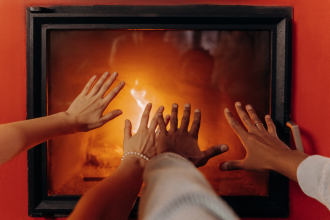The efficiency of an air conditioning system depends on far more than just the unit itself. One often overlooked factor that directly influences how frequently AC systems break down is the quality and condition of a home’s insulation. Insulation doesn’t just impact energy efficiency or utility bills—it plays a central role in determining how hard an air conditioning unit has to work. Poor insulation forces AC units to run longer and cycle more frequently, accelerating wear and leading to increased repairs.
We will explore how insulation interacts with AC systems and why addressing insulation can reduce repair frequency and extend your unit’s lifespan. For those facing persistent HVAC issues, understanding the relationship between insulation and system health can offer long-term relief beyond the traditional solution of upgrading equipment.
How Poor Insulation Leads to Frequent AC Repairs
- Increased Runtime and Component Fatigue
When insulation is inadequate or deteriorating, cooled air escapes the home while warm air infiltrates it. This constant exchange forces your air conditioning system to operate longer and more frequently to maintain the desired indoor temperature. Over time, this excessive runtime leads to fatigue in key components such as the compressor, blower motor, and fan belts. Unlike the occasional cycling expected in a properly insulated home, a poorly insulated space creates conditions where the AC rarely gets a break. This nonstop operation can trigger overheating, blown fuses, or even total compressor failure. It also increases the chance of parts wearing out prematurely, leading to recurring repairs—and ultimately a greater demand for AC repair in Tallahassee, especially during the hotter months when systems are pushed to their limits.
Homeowners often misattribute these breakdowns to faulty units without realizing that the root cause may lie in their walls and attics. Repairing or replacing parts might offer short-term solutions, but the true fix often begins with improving insulation. Air Conditioning helps homeowners understand this connection and offers HVAC assessments that identify underlying contributors to frequent system stress.
- Humidity Challenges and System Overload
Insulation also plays a critical role in controlling indoor humidity levels. In homes with weak insulation, humid outdoor air easily enters the living space, especially in areas like attics, crawl spaces, or older wall assemblies. This influx of moisture places additional strain on the air conditioning system, which now must work harder to remove both heat and excess humidity. As the AC system struggles to keep the environment dry and cool, its components are subjected to dual pressures: temperature regulation and dehumidification. The result is often early breakdowns of coils, clogged condensate drains, and frequent refrigerant issues.
In many Florida homes, where humidity is a constant concern, the combination of high moisture and poor insulation becomes a recipe for ongoing service calls. AC systems are not designed to compensate indefinitely for structural inefficiencies. By properly insulating problem areas, homeowners can relieve much of this pressure and restore balance to their AC’s workload, reducing the likelihood of repeated malfunctions.
- Erratic Temperature Distribution and Thermostat Miscommunication
Poor insulation doesn’t just affect how much energy your home retains—it also influences how evenly that energy is distributed. In an under-insulated home, some rooms may cool quickly while others stay warm, leading to uneven temperatures that confuse the thermostat. When the thermostat receives inconsistent readings from different zones, it may turn the AC on or off unnecessarily. This behavior can cause short-cycling, where the unit starts and stops rapidly. Not only does short-cycling wear out components faster, but it also increases energy consumption and makes the system prone to errors and breakdowns.
From sensors to control boards, multiple parts of your AC can be affected. Homeowners may find themselves calling for repairs without recognizing that the issue starts with the structure’s inability to regulate indoor temperatures effectively. Upgrading insulation ensures a more consistent thermal envelope, allowing the thermostat to operate based on accurate feedback and reducing the mechanical stress placed on the unit.
- Increased Dirt and Debris Infiltration
Insulation also acts as a physical barrier against outdoor pollutants, dust, and allergens. When that barrier is weak or compromised, outside contaminants find their way inside more easily. These airborne particles not only affect indoor air quality but also infiltrate the HVAC system itself. Over time, dust and debris clog air filters, line evaporator coils, and obstruct blower fans. A buildup of contaminants inside the system reduces efficiency and causes overheating or airflow restriction, both of which lead to repair calls. Filters must be replaced more often, and sensitive components like sensors and valves may begin to fail due to contamination.
What seems like a maintenance oversight is frequently a byproduct of poor insulation that fails to keep the outdoor environment at bay. Addressing this issue structurally can reduce the accumulation of harmful particles, protect your system’s internal components, and cut down the frequency of repair visits. It’s not just about comfort—it’s about protecting the health of your AC unit from the inside out.
Insulation is more than just a comfort feature—it’s a safeguard against premature air conditioner failure and excessive repair costs. Its influence on your AC system spans runtime, humidity control, air purity, and thermostat accuracy. A well-insulated home creates an environment where the AC operates within its intended range, preserving component longevity and reducing the need for constant service. In contrast, poor insulation places undue stress on the system, leading to a cascade of preventable malfunctions. Rather than treating each AC breakdown in isolation, homeowners should take a step back and examine the insulation’s role in creating or preventing problems. Upgrading insulation might not be the most visible fix. Still, it often proves to be the most effective in reducing the frequency of AC repairs and extending your system’s performance for years to come.














